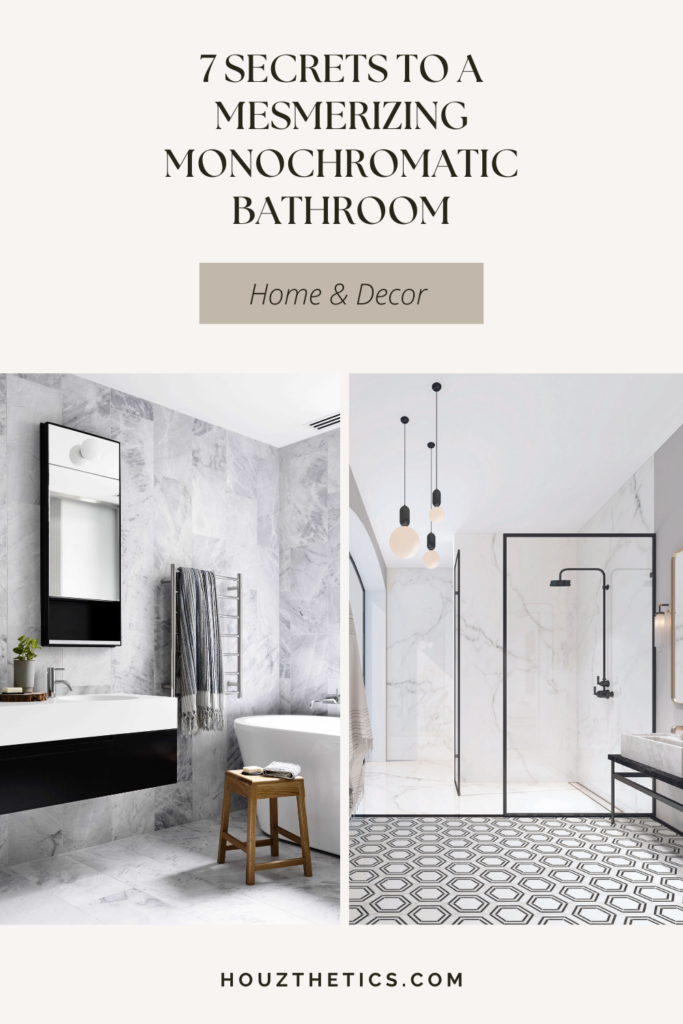
There are many benefits to using a monochromatic color scheme in your bathroom. First, it can help to create a sense of unity and flow in the space. Second, it can make the bathroom feel more spacious and airy. Third, it can be a great way to highlight your favorite bathroom fixtures and accessories.
Monochromatic Bathroom Design
Creating a monochromatic bathroom design involves using various shades and tints of a single color to achieve a cohesive and stylish look. This design approach offers several key aspects that contribute to its effectiveness:
- Color Choice: Selecting the right color is crucial, as it sets the tone and atmosphere of the bathroom.
- Tonal Variation: Utilizing different shades and tints of the chosen color adds depth and visual interest to the space.
- Texture and Pattern: Incorporating textures and patterns in the same color family creates a layered and visually appealing effect.
- Fixtures and Accessories: Choosing fixtures and accessories that complement the color scheme enhances the overall design.
- Lighting: Natural and artificial lighting can be used to highlight different aspects of the monochromatic design.
- Space Perception: Monochromatic schemes can make small bathrooms appear larger and more spacious.
- Timelessness: Monochromatic designs often have a timeless appeal, making them less susceptible to changing trends.
By carefully considering these aspects, homeowners and designers can create stunning monochromatic bathroom designs that exude sophistication, tranquility, and a sense of expanded space. The monochromatic approach allows for endless possibilities in terms of color selection and creative expression, making it a versatile and enduring design choice.
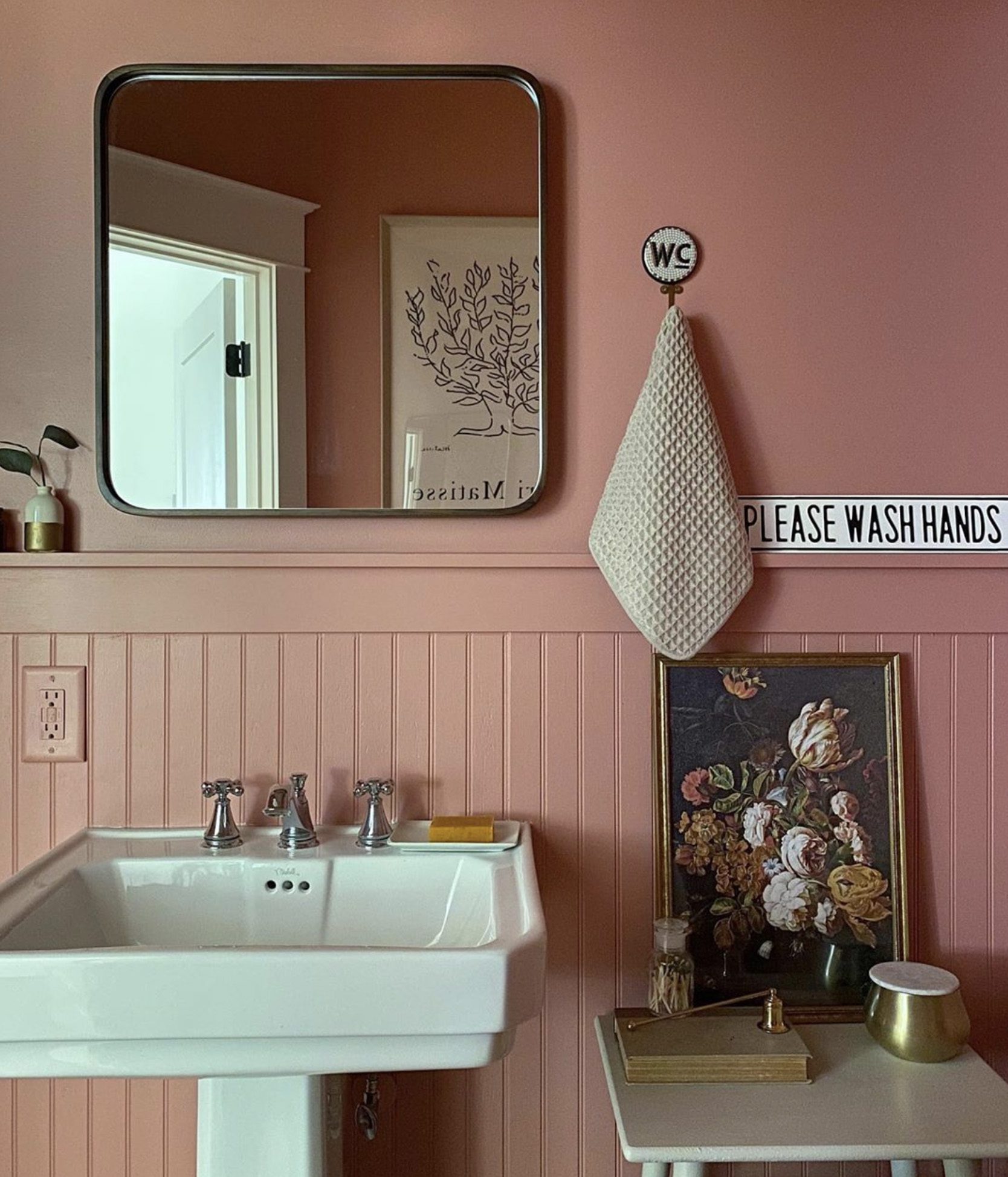
Color Choice
In monochromatic bathroom design, color choice plays a pivotal role in establishing the overall mood and ambiance of the space. The selected color serves as the foundation upon which the entire design scheme is built, influencing the perception and functionality of the bathroom.
- Psychological Impact: Colors have a profound impact on human emotions and behavior. Warm colors like red, orange, and yellow can evoke feelings of energy and warmth, while cool colors like blue, green, and purple promote tranquility and relaxation. Understanding the psychological effects of different colors is crucial in creating a bathroom that aligns with its intended purpose.
- Spatial Perception: Color can also affect the perceived size and shape of a bathroom. Lighter colors, such as white and beige, can make a small bathroom appear larger and more spacious, while darker colors can create a more intimate and cozy atmosphere.
- Focal Point: The chosen color can be used to draw attention to specific elements within the bathroom, such as a freestanding bathtub or a statement mirror. By using a contrasting color or a different shade of the same color, designers can create visual interest and highlight focal points.
- Timelessness: Monochromatic bathroom designs often have a timeless appeal, as they are less susceptible to changing trends. By choosing a neutral color as the base, homeowners can create a bathroom that remains stylish and sophisticated for years to come.
Therefore, selecting the right color for a monochromatic bathroom design is of paramount importance. It sets the tone, influences the spatial perception, creates focal points, and contributes to the overall timelessness of the space.
Tonal Variation
In the context of monochromatic bathroom design, tonal variation plays a crucial role in creating a visually captivating and dynamic space. By incorporating different shades and tints of the chosen color, designers can add depth, dimension, and visual interest to the bathroom.
One of the key benefits of using tonal variation is that it helps to break up the monotony of a single color scheme. A monochromatic bathroom that utilizes only one shade of color can appear flat and one-dimensional. However, by introducing variations in tone, designers can create a more visually stimulating and engaging space.
Another benefit of tonal variation is that it can be used to create different moods and atmospheres in the bathroom. For example, using lighter shades of the chosen color can create a bright and airy feel, while darker shades can create a more intimate and cozy atmosphere.
When creating a monochromatic bathroom design with tonal variation, it is important to carefully consider the placement of different shades and tints. For example, lighter shades can be used on the walls to create a sense of spaciousness, while darker shades can be used on the floor to ground the space. Additionally, different shades can be used to highlight specific features of the bathroom, such as the bathtub or vanity.
Overall, tonal variation is an essential element of monochromatic bathroom design. By utilizing different shades and tints of the chosen color, designers can create visually interesting and dynamic spaces that are both stylish and functional.
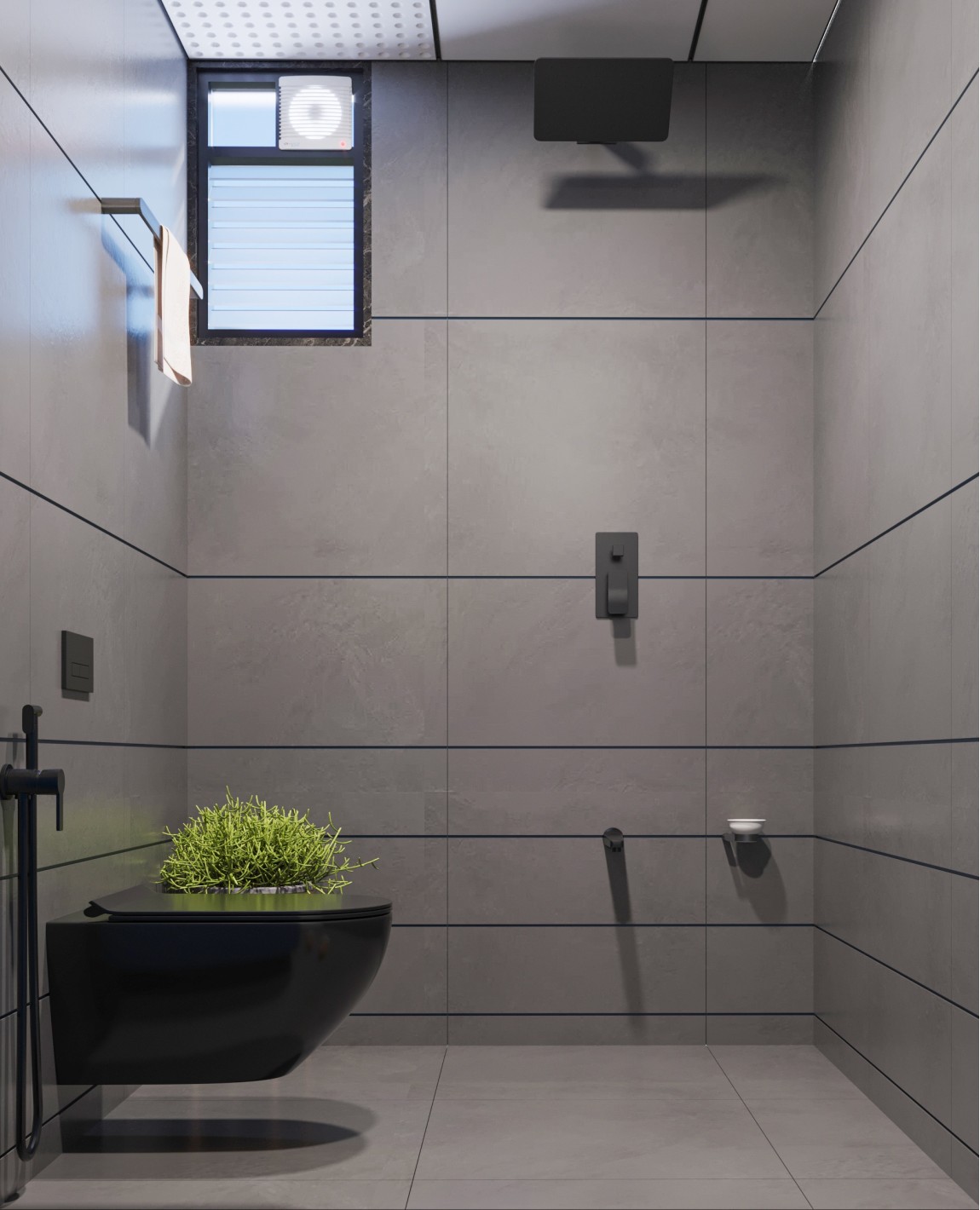
Texture and Pattern
In the realm of monochromatic bathroom design, texture and pattern play a pivotal role in creating a visually captivating and dynamic space. By incorporating different textures and patterns within the same color family, designers can add depth, dimension, and visual interest to the bathroom.
One of the key benefits of using texture and pattern in monochromatic bathroom design is that it helps to break up the monotony of a single color scheme. A monochromatic bathroom that utilizes only one texture and pattern can appear flat and one-dimensional. However, by introducing variations in texture and pattern, designers can create a more visually stimulating and engaging space.
Another benefit of using texture and pattern is that it can be used to create different moods and atmospheres in the bathroom. For example, using rough and organic textures can create a more rustic and natural feel, while smooth and polished textures can create a more modern and sophisticated look. Additionally, patterns can be used to add a touch of playfulness and personality to the space.
When creating a monochromatic bathroom design with texture and pattern, it is important to carefully consider the placement of different elements. For example, different textures can be used to create different zones within the bathroom, such as the shower area or the vanity area. Additionally, patterns can be used to highlight specific features of the bathroom, such as the bathtub or the mirror.
Overall, texture and pattern are essential elements of monochromatic bathroom design. By utilizing different textures and patterns within the same color family, designers can create visually interesting and dynamic spaces that are both stylish and functional.
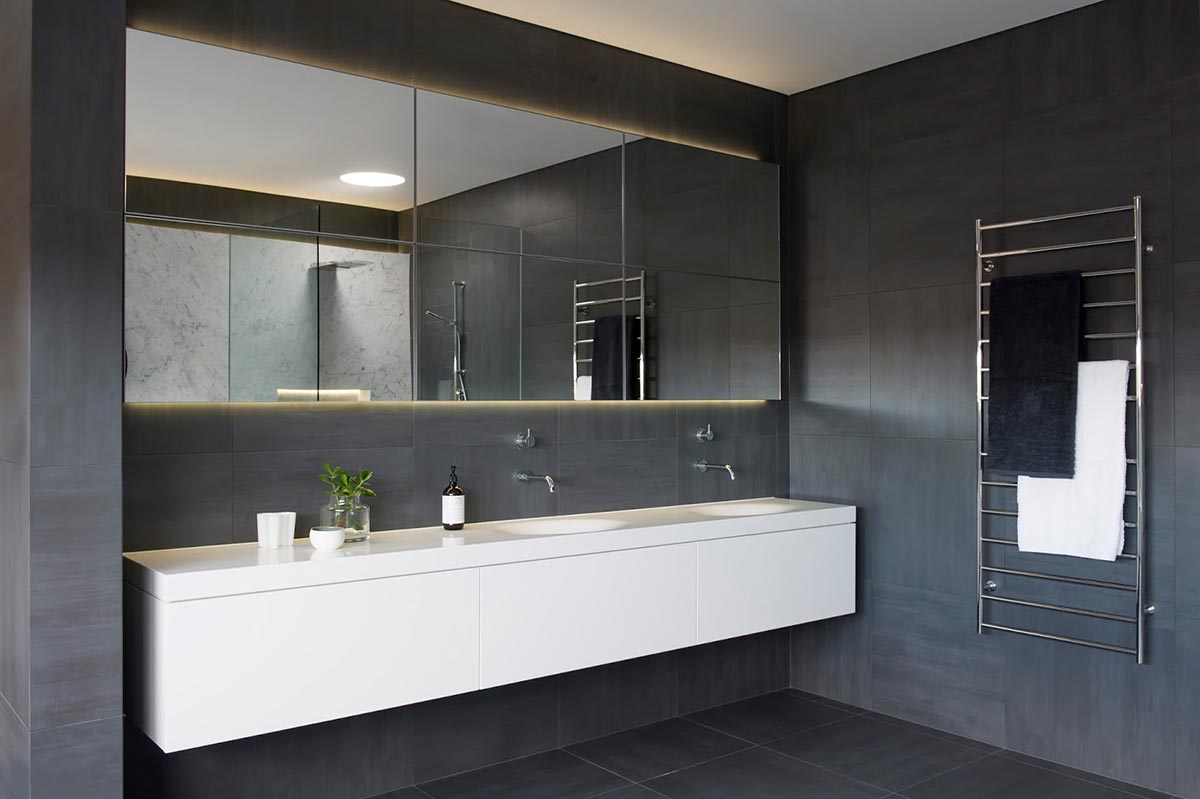
Fixtures and Accessories
In the context of monochromatic bathroom design, fixtures and accessories play a crucial role in enhancing the overall aesthetic and functionality of the space. By carefully selecting fixtures and accessories that complement the chosen color scheme, designers can create a cohesive and visually appealing bathroom that meets the needs of the user.
- Complementary Finishes: Choosing fixtures and accessories with finishes that complement the color scheme creates a harmonious and unified look. For example, in a bathroom with a cool gray color scheme, fixtures and accessories with brushed nickel or chrome finishes can add a touch of sophistication and elegance.
- Shape and Style: The shape and style of fixtures and accessories can also contribute to the overall design of the bathroom. In a monochromatic bathroom with a modern aesthetic, fixtures and accessories with clean lines and geometric shapes can enhance the contemporary feel. Alternatively, in a bathroom with a more traditional style, fixtures and accessories with ornate details and curved lines can add a touch of classic charm.
- Functionality: While aesthetics are important, it is also essential to consider the functionality of fixtures and accessories. For example, a bathroom with a small footprint may benefit from space-saving fixtures such as a wall-mounted vanity or a corner shower unit. Additionally, fixtures and accessories with user-friendly features, such as motion-activated faucets or adjustable showerheads, can enhance the overall user experience.
- Personalization: Fixtures and accessories can also be used to add a touch of personalization to the bathroom. For example, a homeowner may choose to install a statement mirror with an intricate frame or opt for unique towel racks or soap dispensers that reflect their individual style.
By carefully considering the selection of fixtures and accessories in relation to the monochromatic color scheme, designers can create bathrooms that are not only visually appealing but also functional and personalized to the needs of the user.

Lighting
In monochromatic bathroom design, lighting plays a crucial role in shaping the overall ambiance and showcasing the chosen color scheme. By utilizing both natural and artificial lighting strategically, designers can highlight different aspects of the design and create a visually cohesive and inviting space.
Natural light is an essential element in any bathroom design. It provides a bright and airy atmosphere that can make the space feel more spacious and inviting. In a monochromatic bathroom, natural light can help to enhance the chosen color scheme by casting subtle shadows and creating a sense of depth. For example, a bathroom with a cool gray color scheme can appear brighter and more inviting when bathed in natural light, showcasing the subtle variations in the gray tones.
Artificial lighting is equally important in monochromatic bathroom design, as it allows for greater control over the ambiance and mood of the space. Artificial lighting can be used to create different effects, such as highlighting specific features of the bathroom, creating a relaxing spa-like atmosphere, or providing task lighting for practical purposes. For example, a wall-mounted vanity mirror with integrated LED lighting can provide ample illumination for grooming, while a pendant light fixture above the bathtub can create a warm and inviting ambiance for relaxation.
By carefully considering the interplay between natural and artificial lighting, designers can create monochromatic bathrooms that are not only visually appealing but also functional and inviting. Lighting plays a vital role in enhancing the overall design concept and creating a space that is both aesthetically pleasing and practical.

Space Perception
In the realm of monochromatic bathroom design, space perception plays a pivotal role in creating the illusion of a larger and more spacious bathroom, especially in smaller spaces. Monochromatic color schemes utilize various shades and tints of a single color, eliminating the visual clutter and fragmentation that can make a small bathroom feel cramped and confining.
When all surfaces, from walls and floors to fixtures and accessories, share a cohesive color palette, the eye is not drawn to any particular element, resulting in a seamless and unified visual experience. This uninterrupted flow of color creates a sense of continuity that extends the perceived boundaries of the bathroom, making it feel more expansive than it actually is.
Moreover, lighter shades and tints of the chosen color, such as white, beige, or light gray, can further enhance the effect of spaciousness. These hues reflect more light, bouncing it around the room and creating a brighter and more airy atmosphere. This plays a crucial role in making a small bathroom feel less constricted and more inviting.
Incorporating mirrors strategically can also contribute to the perception of a larger space. Mirrors reflect light and create the illusion of depth, making the bathroom appear more expansive. A large mirror above the vanity or opposite a window can effectively double the perceived size of the room.
Understanding the principles of space perception in monochromatic bathroom design is essential for creating bathrooms that feel both visually appealing and comfortably spacious, even in smaller footprints.
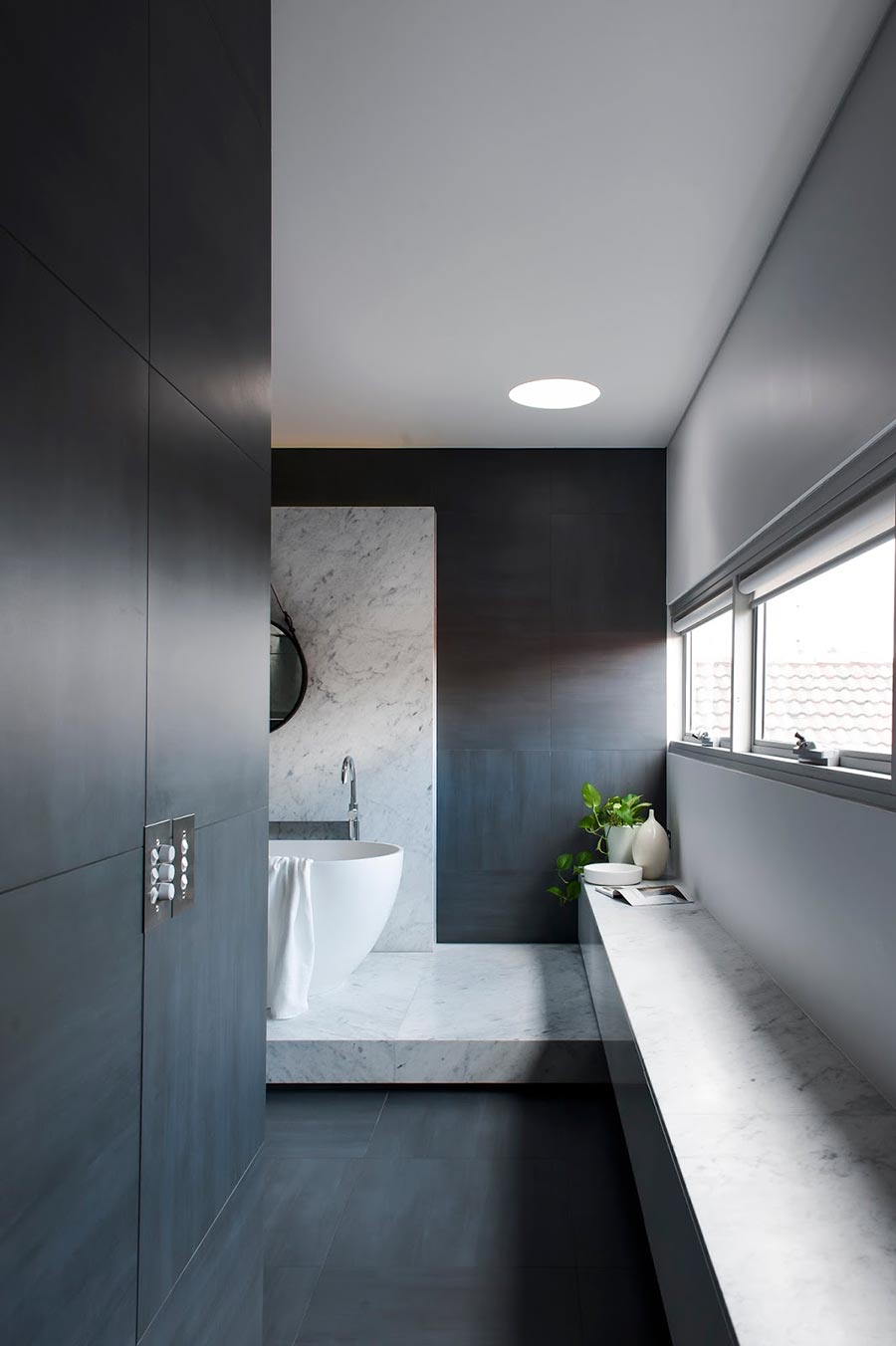
Timelessness
In the realm of interior design, the concept of timelessness holds significant value, particularly in the context of monochromatic bathroom design. A monochromatic color scheme, characterized by the use of various shades and tints of a single hue, offers a timeless aesthetic that transcends fleeting trends and maintains its relevance over extended periods.
The enduring appeal of monochromatic bathroom designs stems from several key factors. Firstly, the absence of contrasting colors eliminates the risk of visual fatigue or datedness that can arise from trendy color combinations. Monochromatic schemes create a cohesive and harmonious environment that is both visually pleasing and calming. This lack of visual clutter allows the focus to remain on the intrinsic qualities of the space, such as the textures, materials, and overall design.
Furthermore, monochromatic designs often incorporate neutral colors such as white, beige, or gray. These hues have a classic and versatile appeal that complements a wide range of bathroom styles, from traditional to modern. By avoiding bold or highly saturated colors, monochromatic bathrooms exude a sense of understated elegance that remains stylish regardless of changing design preferences.
In practical terms, the timelessness of monochromatic bathroom designs translates to longevity and reduced maintenance. Unlike bathrooms that embrace trendy color combinations, monochromatic spaces are less likely to require frequent updates or renovations to keep pace with changing styles. This can result in significant cost savings and reduced environmental impact over the long term.
In conclusion, the timelessness of monochromatic bathroom designs is a key factor contributing to their enduring popularity. By embracing a cohesive color scheme and incorporating neutral hues, these designs create spaces that are both aesthetically pleasing and immune to the whims of fleeting trends. This results in bathrooms that remain stylish, inviting, and functional for many years to come.

Frequently Asked Questions about Monochromatic Bathroom Design
Monochromatic bathroom designs have gained popularity for their timeless appeal and ability to create cohesive and visually appealing spaces. Here are answers to some commonly asked questions about monochromatic bathroom design:
Question 1: What are the benefits of using a monochromatic color scheme in a bathroom?
Monochromatic color schemes offer several benefits in bathroom design. They create a sense of unity and flow, making the bathroom feel more spacious and airy. Additionally, monochromatic designs can highlight bathroom fixtures and accessories, creating a visually striking and cohesive look.
Question 2: How do I choose the right color for a monochromatic bathroom design?
Choosing the right color for a monochromatic bathroom design depends on personal preferences and the desired atmosphere. Neutral colors like white, gray, and beige are popular choices as they create a classic and versatile look. However, bolder colors can also be used to create a more dramatic and stylish effect.
Question 3: How can I add visual interest to a monochromatic bathroom design?
To add visual interest to a monochromatic bathroom design, incorporate different shades and tints of the chosen color. Additionally, use textures and patterns to create depth and dimension. Varying the finishes of fixtures and accessories can also add visual appeal.
Question 4: What are some tips for making a small bathroom appear larger with a monochromatic design?
To make a small bathroom appear larger with a monochromatic design, use lighter shades of the chosen color and incorporate mirrors to reflect light and create the illusion of space. Additionally, avoid using too many patterns or textures, as this can make the bathroom feel cluttered.
Question 5: How can I incorporate natural light into a monochromatic bathroom design?
Natural light can enhance the beauty of a monochromatic bathroom design. Position mirrors opposite windows to reflect light and make the space feel brighter. Additionally, consider using sheer curtains or blinds to filter natural light while maintaining privacy.
Question 6: What are some common mistakes to avoid in monochromatic bathroom design?
Common mistakes to avoid in monochromatic bathroom design include using too many different shades of the same color, which can create a disjointed look. Additionally, avoid using too many patterns or textures, as this can make the bathroom feel cluttered and overwhelming.
In conclusion, monochromatic bathroom design offers a timeless and sophisticated approach to creating visually appealing and cohesive spaces. By carefully considering color choice, incorporating visual interest, and avoiding common mistakes, homeowners can create beautiful and functional monochromatic bathrooms.
Conclusion
Monochromatic bathroom design, characterized by the use of various shades and tints of a single color, has emerged as a timeless and sophisticated approach to creating visually cohesive and aesthetically pleasing spaces. This design strategy offers numerous advantages, including the ability to create a sense of unity and flow, enhance the perception of spaciousness, and highlight bathroom fixtures and accessories.
To achieve a successful monochromatic bathroom design, careful consideration should be given to color choice, tonal variation, texture, and pattern. Additionally, lighting plays a crucial role in highlighting the color scheme and creating the desired ambiance. By incorporating these elements thoughtfully, homeowners can create monochromatic bathrooms that are both beautiful and functional, offering a sanctuary of relaxation and rejuvenation.
The enduring appeal of monochromatic bathroom design lies in its ability to transcend fleeting trends and maintain its relevance over extended periods. Its classic and versatile nature ensures that monochromatic bathrooms remain stylish and inviting for years to come, making it an ideal choice for those seeking a timeless and sophisticated bathroom aesthetic.
